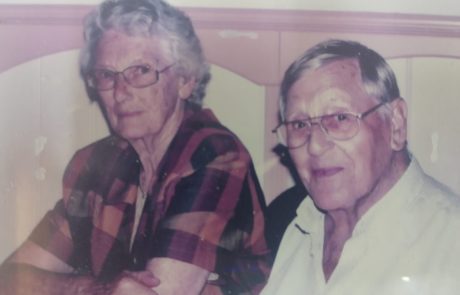WHO WE ARE
WHO WE ARE & WHAT WE DO
WHY WAS THE KENYA KESHO TRUST CHARITY STARTED
Tomorrow is tough for lots of kids. Tomorrow for kids from poor families in Kenya can be very tough indeed.
Kenya Kesho, translated into English means Kenya for Tomorrow or Kenya for the Future. Kenya Kesho Trust helps make tomorrow a far more optimistic and cheerful world for girls from very poor families.
The Kenya Kesho School for Girls will create a whole new dimension to education, development and success for girls in our area, for our Trustees, for our students, both those enrolled presently and for those to be enrolled in the future and for Peter and myself.
The charity was started to help our community break the cycle of poverty. After a few years financing teachers, paying for books, school fees, university fees etc we felt we were not making a big enough impact locally so we decided to build The Kenya Kesho School for Girls. A primary school that is an icon within the community. With a primary school education a girl is more able to learn to fill her place in the community, will offer her children a more rounded education and will be more inclined to be a leader within the community and the larger arena. The Kenya Kesho Trust fully finances and manages The Kenya Kesho School for Girls. We will be operating from a very small area – 5km radius from the school in Mshiu Village – but the impact will be huge.
TOGETHER WE WILL
We bring our energy, our enthusiasm and our creativity to our project.
Why don’t you bring your energy, your enthusiasm, your creativity, your skills and your confidence to The Kenya Kesho School for Girls?
Join us. Support us. Come and see us.
Build the future with us.
THE KENYA KESHO SCHOOL FOR GIRLS
Why do we support education at a primary level? Early childhood is where any child picks up the basics for their future life. Thus, we specifically support education for girls at a primary level. Mothers and fathers in very rural areas have seldom gone to, or completed, school.
The mother may have started school but more often than not will have been pulled out of school at an early age – not having learnt much at all – and then to be married off to someone with more money than the selling family. Imagine the possibility of being a grandmother at 25 or 26. This thought does not thrill me and I feel sure that most reading this would not be thrilled either.
How would you feel if your daughter, or any young girl in your family, aged 11 years were sent out each morning and told she could not come back home unless she came back with the equivalent of US $1 (one US $ that is)? No, I wouldn’t like it either, but if one is poor, hungry and from a very large family, what does one do?
YOUNG GIRLS
How do young 11-year-old girls earn that dollar? Some chop firewood and sell in the marketplace. Some make delicious little snacks, to be sold on the side of the road and some have discovered that older men love younger bodies. Some of these girls service up to four men a day in order to bring back that one dollar.
Can you imagine this life for any significant young girl in your family? No, I think not, and neither can I. Can you imagine the physical and mental trauma of being in any of those situations? My imagination shuts down at the thought.
SO HOW DOES ONE GO ABOUT IMPROVING THE EDUCATION OF THESE YOUNG GIRLS?
One solution that we came up with was to build and administer The Kenya Kesho School for Girls. This is a Primary School with Early Childhood Development facilities and superb primary school facilities for up to 250 girls. We will provide essential support through education, sport and art. We will assist the girl child to prepare for the future by developing her skills and her confidence. Girls will be taught self-respect, the value of a quality education and they will be encouraged to recognise their worth and significance in the build for the future of this beautiful country.
Peter and I have worked with the local community for many years promoting education for the girl child – it is a well documented fact that by educating a girl you are educating future generations. Educating girls has been identified as one of the best solutions for reversing the relentless trend of poverty and is one of the most powerful tools to empower women within the family and society. Educating a girl changes her destiny, raises families out of poverty, and is a starting point for social change. Education is the key to unlocking potential for girls in our area of Kwale County. By providing education in a very rural area we are setting new standards for taking responsibility for the future of girls. We feel that if we don’t act now another generation of girls from coastal southern Kenya will slip through the net of education.
Peter and I hope that by providing interesting creative teaching practices, exciting teaching materials and a curriculum, based on the National Curriculum but with some unique differences, we will encourage more mothers to get more involved in the education of their children.
Peter and I benefited from an excellent education here in Kenya. Why, fifty-five years later, are we still struggling to educate the girl child in our area? Why are we still struggling with early child marriage, blatant girl child abuse, AIDS and FGM?
Education, education, education is needed and education will go a long way to relieving these archaic and painful practices.
KENYA IS MY HEARTBEAT!
Peter, my husband, and I are both Kenyans of Dutch and British descent and have spent the last 30 years living and working in Shimoni. For the past twelve years we have been supporting education in the district. Now that we are semi-retired we feel the need to become more involved.
The Kenya Kesho Trust was started with an inheritance we, Peter and Sandra Ruysenaars, received from our parents, Willem and Jopie Ruysenaars and Monty and Margaret England, when they died. We decided then that we would invest our inheritance into education in this locality. Education, as you all know, is the only way forward for development and progress in any community.
In 2006 we started working with local communities and schools in the location to improve education standards by sponsoring teachers’ assistants in local primary schools. This incentive proved not to be very productive or successful. The decision was made to abandon the idea.
“Now, what shall we do?” was the next question . . . . . . . .
We decided to build The Kenya Kesho School for Girls . . . . . . . .



